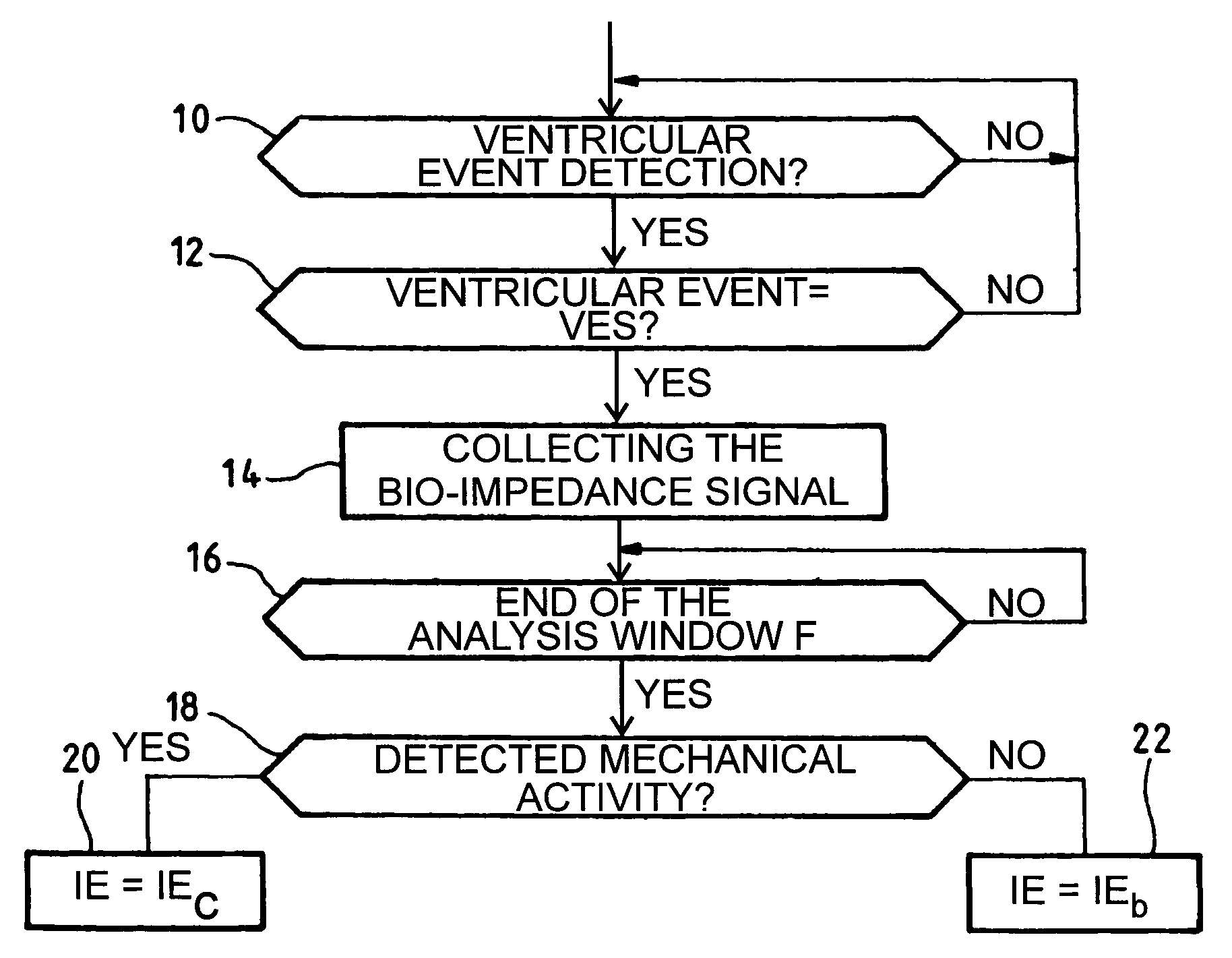Discrimination of noxious and non noxious ventricular extrasystoles in an active implantable medical device such as a cardiac pacemaker, defibrillator, cardiovertor and/or multisite device
a technology which is applied in the field of discrimination of noxious and non-noxious ventricular extrasystoles in an active implantable medical device, which can solve the problems of ventricular activity, known devices always react in a systematic and undifferentiated way, and deteriorate the filling of cavities
- Summary
- Abstract
- Description
- Claims
- Application Information
AI Technical Summary
Benefits of technology
Problems solved by technology
Method used
Image
Examples
Embodiment Construction
[0021]With reference to FIG. 1, illustrated in plot E is an electrocardiographic tracing layout corresponding to a normal cardiac cycle (defined by the event marker P corresponding to a detection of a spontaneous atrial activity and the event marker R corresponding to a spontaneous ventricular activity) followed by a VES stopping this cycle at a moment that, in the illustrated example, is rather late. The late occurrence of this detected VES, during the course of the diastolic phase, will involve a significant mechanical activity (contraction) of the myocardium. It thus concerns a non noxious VES, and in such case it is enough for the device to recycle the escape interval at its normal programmed or calculated value.
[0022]One will understand that the term “significant mechanical activity” refers to an activity producing the ejection of a sufficient blood volume so that, from a hemodynamic point of view, the extrasystolic cycle can be compared to a normal cycle, without it being usef...
PUM
 Login to View More
Login to View More Abstract
Description
Claims
Application Information
 Login to View More
Login to View More - R&D
- Intellectual Property
- Life Sciences
- Materials
- Tech Scout
- Unparalleled Data Quality
- Higher Quality Content
- 60% Fewer Hallucinations
Browse by: Latest US Patents, China's latest patents, Technical Efficacy Thesaurus, Application Domain, Technology Topic, Popular Technical Reports.
© 2025 PatSnap. All rights reserved.Legal|Privacy policy|Modern Slavery Act Transparency Statement|Sitemap|About US| Contact US: help@patsnap.com


